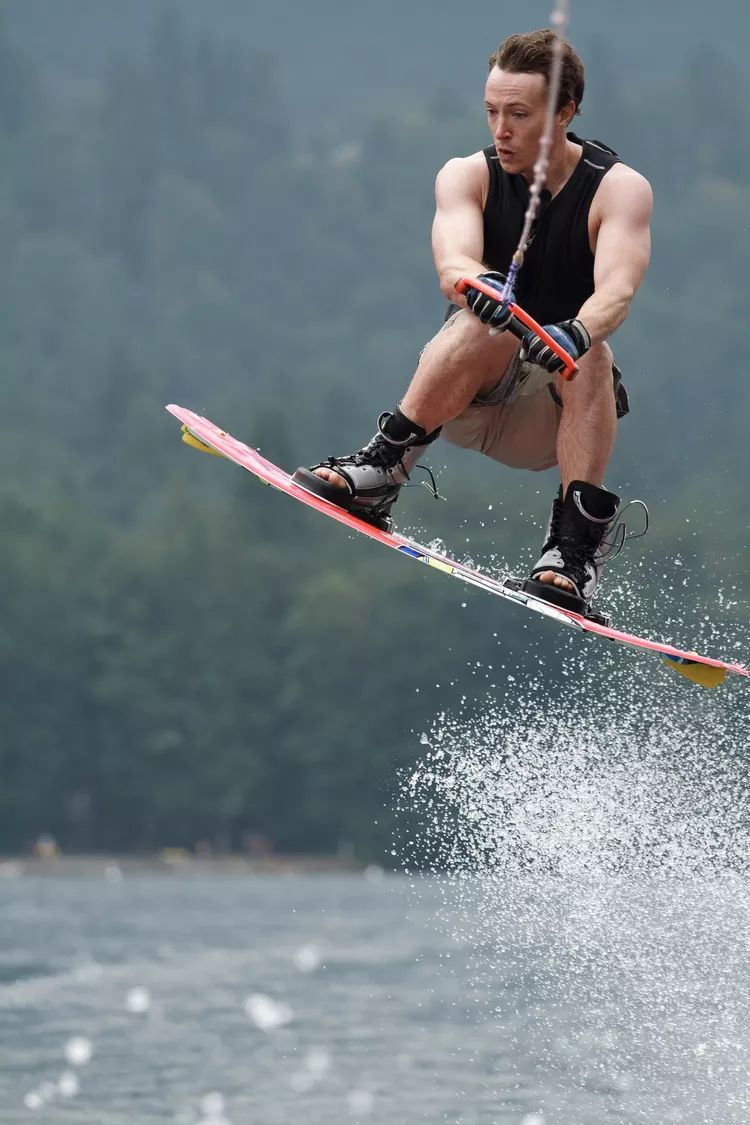Summary
Learning the Progressive Edge
You’ve been wakeboarding for a little while and you feel very comfortable riding and turning the board; however, the true thrill of this sport is jumping. It may seem straightforward: ride up to the wake and jump hard off the top. Nevertheless, mastering the jump requires understanding some key techniques. To get airborne efficiently, it is essential to learn about the progressive edge.
The progressive edge is a method of approaching the wake where you start slowly and then increase your speed just before takeoff. This technique allows for maximum lift. To visualize this, consider a swinging wrecking ball. When it begins its swing, it moves slowly and gains momentum as it approaches impact. To apply this to your jumps, start by cutting out to create some slack in your rope. Then, cut back in toward the wake, gradually increasing your speed by pushing your heels into the edge. Focus on a point on the wake where you want to launch yourself into the air.
Stand Tall and Lift Off
As you near the wake, many beginners instinctively try to jump from the very top. While this may seem logical, the best lift actually occurs just before you reach the wake. There is a slight dip leading into the incline of the wake, and it is crucial to remain standing tall with straight legs at this point. This position allows you to absorb the energy of the wake.
Once you’ve passed over the lip, pull your knees upward toward your chest to gain height. Often, people instinctively raise one hand in the air, which may resemble riding a bull. To maintain balance in mid-air, draw the rope closer to your waist and keep your gaze fixed on where you want to land.
Land Smooth and Ride Away
While reaching the peak of your jump, it is essential to keep an eye on your landing point. Be careful not to tilt the nose of your board downward, as this can lead to falls. Instead, focus on bending your knees and positioning your tail down as you land on the other side of the wake. Locking your legs upon impact can cause jarring of your joints and potential injuries, especially if you land in the flats. As you ride away, maintain the same angle for a few moments, preventing unnecessary falls or edge catches.
Fly as Often as You Can
Perfecting your jumping technique is vital for becoming an accomplished wakeboarder. These foundational skills will enable you to attempt more impressive tricks. Understand that achieving ideal jumps consistently requires years of practice, so stay committed. Throughout your journey, anticipate the occasional fall, off-axis jumps, or awkward landings. Nevertheless, with perseverance, you will find yourself soaring to new heights.





